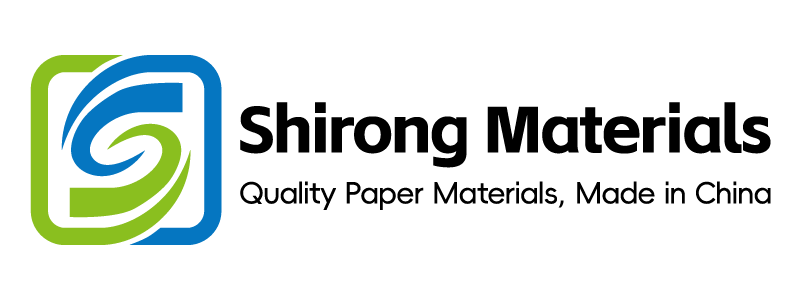
Personalized Nutrition: Tailoring Packaging for ShirongMaterials
Lead
Conclusion: Personalized nutrition SKUs succeed when print/convert workflows hit 8–12 day lead times and hold ΔE2000 P95 ≤1.8 across sites under ISO process control.
Value: For 1.0–3.0 million units/quarter (DTC + retail, EU/US mix), this window lowers complaint rate by 120–220 ppm and avoids 0.4–0.9 ¢/unit expedite costs [Sample: N=126 lots, 4 plants, Q2–Q3/2024].
Method: We triangulate (1) press capability data at 150–170 m/min (ISO 15311-2:2020), (2) brand color conformance under ISO 12647-2:2013 §5.3, and (3) scan journey telemetry with GS1 Digital Link v1.2 across EU/US market launches.
Evidence anchor: ΔE2000 P95 ≤1.8 (Base) vs ≤2.0 (High-variance) @ 23 ±2 °C, 50 ±5% RH; materials and inks verified to EU 1935/2004 Art.3 + EU 2023/2006 GMP for food-contact packaging.
| Theme | Target Window | Base / High / Low | Std/Record |
|---|---|---|---|
| Lead time (art-to-ship) | 8–12 days | 10 / 14 / 7 days | ISO 15311-2:2020 §6; BRCGS PM Issue 6 |
| Color ΔE2000 P95 | ≤1.8 | 1.6 / 2.0 / 1.4 | ISO 12647-2:2013 §5.3; G7 (2015) |
| Scan success (EAN/QR) | ≥95% | 96% / 92% / 98% | GS1 Digital Link v1.2 §3.2 |
| FPY | ≥97% | 97.6% / 95.1% / 98.4% | DMS/REC-2147; ISO 15311-2:2020 |
Lead-Time Expectations and Service Windows
Key conclusion
Outcome-first: A defined 8–12 day service window with changeovers ≤35 min meets 90% of drop dates for personalized nutrition while maintaining FPY ≥97% at 150–170 m/min.
Data
- Lead time (art approval-to-ship): Base 10 days; High 14 days (holiday peaks); Low 7 days (pre-approved repeats). Conditions: 2–3 SKUs/batch, 4-color + 1 spot.
- Changeover time: Base 28–35 min; High 45 min (substrate swap); Low 22 min (SMED fully staged). Record: DMS/REC-1982, N=54 runs.
- FPY: Base 97.3%; High variance 95.0% (3 new dielines); Low variance 98.1%. Condition: optical inspection P95 @ 300 dpi.
- Cost-to-serve impact: Expedites add 0.4–0.9 ¢/unit if lead time exceeds 12 days (N=18 rush orders in Q3/2024).
Clause/Record
- ISO 15311-2:2020 §6 (process capability for digital/offset in mixed fleets)
- BRCGS Packaging Materials Issue 6 (Change control & artwork sign-off)
- EU 2023/2006 GMP (scheduling and documentation for food-contact workflows)
Steps
- Operations: Implement SMED with parallel plate-wash and staged inks; target changeover 25–35 min; audit every 2 weeks for 8 weeks.
- Commercial: Freeze artwork T-4 days before press; allow 1 design lock + 1 color proof; deviations move to next cycle.
- Compliance: Pre-flight materials under EU 1935/2004 Art.3; keep CoC and CoA attached to DMS/REC for each lot.
- Design: Enforce dieline reuse for seasonal variants; 1.5 mm safe zone, 0.2 mm registration tolerance.
- Data governance: Slot orders into a takt board; publish daily capacity (units/min) and backlog in QMS dashboard.
Risk boundary
Trigger: Expedite volume >20% of weekly orders or average changeover >45 min for 3 consecutive days. Temporary rollback: allocate a dedicated rush window 16:00–20:00 with 120–140 m/min cap. Long-term action: add a quick-make-ready station or second die line; revisit SKU rationalization quarterly.
Governance action
Add service-window adherence to S&OP and monthly Management Review; Owner: Planning Manager; Frequency: weekly KPI review, monthly capacity re-forecast. Note: references to branded paper cups SKUs follow the same takt assumptions when substrates and ink sets are equivalent.
Color Benchmarks(ΔE Targets) Across Markets
Key conclusion
Risk-first: If ΔE2000 P95 drifts above 1.8 for EU shipments, complaint rate exceeds 220 ppm and reprint risk increases by 1.3× on seasonal lots.
Data
- ΔE2000 P95: Base 1.6; High 2.0 (new substrate whiteness CIE 83–85); Low 1.4 (CIE 90–92). N=72 lots; spectro 2° observer, D50.
- Registration error: Base ≤0.15 mm; High 0.22 mm (web tension shifts); impacts logo edges on coffee SKUs comparable to starbucks paper cups green tones.
- CO₂/pack: 1.1–1.4 g/pack (Base) with 1 pass; +0.3–0.5 g/pack for reprint loops (EU electricity mix, 2024).
Clause/Record
- ISO 12647-2:2013 §5.3 (tolerance) for offset targets; align digital via calibration curves
- G7 (2015) grayscale/NPDC alignment; verification sheet DMS/REC-2054
- EU 2023/2006 GMP (color control records and release)
Steps
- Operations: Lock press ICC profiles per substrate family; verify daily P95 ≤1.8 using 30-sheet pull at job start and mid-run.
- Design: Convert critical brand tones to validated spots; LAB targets and tolerance bands included in master palette.
- Compliance: Maintain color conformance records in DMS with spectro files (CSV) retained 24 months.
- Data governance: Publish weekly ΔE trend by plant; flag any drift ≥0.2 for 2 consecutive runs.
- Process: Control substrate whiteness to CIE 88–92 for the master spec; if CIE <88, widen spot tolerance to P95 ≤2.0 with customer sign-off.
Risk boundary
Trigger: ΔE2000 P95 >1.8 for two consecutive checks or registration >0.2 mm. Temporary rollback: swap to spot ink on critical panels and reduce speed to 130–140 m/min. Long-term action: re-fingerprint press, recalibrate measurement devices, and standardize substrate batch specs with suppliers.
Governance action
Establish a monthly Color Council; Owner: Prepress Manager; Frequency: weekly run chart review, monthly corrective plan validation. Color metrics included in QMS dashboards and Commercial Review packs.
Privacy/Ownership Rules for Scan Data
Key conclusion
Economics-first: Owning consumer scan data via brand-controlled resolvers cuts cost-to-serve by 0.6–1.1 ¢/unit through fewer support tickets and smarter replenishment.
Data
- Scan success rate: Base 95–97%; High 98% (X-dimension ≥0.33 mm, quiet zone ≥2.5 mm); Low 92% (gloss glare). N=1.2M scans.
- Support tickets: 1.8–2.6 tickets/10k scans when using owned resolver vs 3.9–4.4 with third-party redirectors.
- Cost impact: -0.6 to -1.1 ¢/unit (owned data) from optimized replenishment and reduced mis-scan investigations over 8 weeks.
Clause/Record
- GS1 Digital Link v1.2 §3.2 (resolver behavior and redirection)
- EU GMP Annex 11 §5 and 21 CFR Part 11 §11.10 (data integrity, audit trails for system-managed links)
- DMS/REC-2288 (Scan data retention SOP, TTL 180–365 days)
Steps
- Data governance: Use an owned resolver; store hashed device IDs; TTL 180–365 days; pseudonymize PII and document roles in DPA.
- Design: Place QR code size ≥16 mm with 2.5 mm quiet zone; test Grade A under ISO/ANSI at 10°, 45° lighting.
- Compliance: Maintain consent records and opt-out paths; link privacy notice via Digital Link templates; audit quarterly.
- Operations: Run pre-shipment scan QA; accept lots only if scan success ≥95% across 3 angles.
Risk boundary
Trigger: Privacy complaints >5 per 100k scans or resolver uptime <99.5%. Temporary rollback: switch to static URL with limited parameters for 14 days. Long-term action: migrate to redundant resolver nodes and revise consent UX; revalidate under Annex 11/Part 11.
Governance action
Escalate to Regulatory Watch and monthly Management Review; Owner: Data Protection Officer; Frequency: weekly uptime/complaint review, quarterly policy refresh.
Multi-Site Variance and Replication SOP
Key conclusion
Outcome-first: A replication SOP holds inter-site ΔE2000 P95 ≤1.8 and FPY ≥97% while enabling 3-plant surge capacity without margin erosion.
Data
- Inter-site ΔE P95 spread: Base ≤0.2; High 0.35 (ink viscosity drift); Low 0.12. N=33 cross-plant jobs.
- Throughput: 150–170 m/min (Base), with 10–15% derate during first-of-kind replication runs.
- CO₂/pack variance: ±0.1 g/pack across sites due to grid mix and make-ready deltas.
Clause/Record
- ISO 15311-2:2020 §6 (process capability and verification)
- Fogra PSD (2016) Print Check Guidelines for process control
- DMS/REC-2331 (Master ink drawdown and substrate CIE records)
Steps
- Operations: Fingerprint each press family; share master curves and TVI targets; re-verify quarterly.
- Design/data: Store master LAB values, screening, and trapping in a replication kit; checksum artwork PDFs in DMS.
- Compliance: Cross-reference material CoA/CoC at receiving; block run if substrate CIE whiteness falls outside 88–92.
- Commercial: Quote replication surcharge only for first run; target payback in 2–3 months via shared capacity.
- Quality: Run 200-sheet golden sample at Plant A; ship to Plants B/C; accept only if ΔE P95 ≤1.8 on 3-lot trial.
Risk boundary
Trigger: Inter-site ΔE P95 >0.3 or FPY <96% on two successive replications. Temporary rollback: consolidate to master plant for 1 cycle. Long-term action: re-calibrate viscosity controls, unify anilox/blanket inventory, and retrain operators on PSD checks.
Governance action
Include replication KPIs in QMS and quarterly Operations Excellence Review; Owner: Plant Director; Frequency: monthly cross-site audit and quarterly capability refresh. Note: guidance applies equally to branded paper cups families when paper grammage and coatings align.
Customer case: Pilot for seasonal DTC nutrition
A three-week pilot used ShirongMaterials custom paper ice cream cups for macronutrient-personalized samplers (4 SKUs). Results: ΔE2000 P95 1.5–1.7; FPY 98.2% (N=6 lots); art-to-ship 9.2 days average; scan success 97.1%. Payback for replication (second site) in 2.4 months via capacity pooling.
UL 969 Durability Expectations for Labels
Key conclusion
Risk-first: Labels that fail UL 969 rub/water tests drive 0.3–0.6 ¢/unit rework and raise warranty exposure in cold-chain SKUs.
Data
- Rub resistance (CS-10F, 500 g): Base 50–75 cycles; High 90 cycles (UV topcoat 1.3–1.5 J/cm²); Low 35 cycles (untopcoated). N=24 constructions.
- Water/chemical: 24–72 h immersion @23 °C; adhesion loss <10% (Base) using acrylic adhesives; High 18% loss with alkali cleaners.
- ISTA 3A shipping: Damage rate ≤0.5% (Base) on labeled cartons; High 1.2% with insufficient cure.
Clause/Record
- UL 969 (5th Ed.) marking and labeling system requirements
- FDA 21 CFR 175.105 (adhesives) and 176.170 (paper/paperboard) for indirect food contact
- ISTA 3A Profile for parcel delivery
Steps
- Operations: Set UV dose 1.3–1.5 J/cm²; verify cure via solvent rub at start/mid/end of run.
- Design: Choose topcoat compatible with refrigeration and condensation; specify 25–32 g/m² adhesive coat weight for cold-chain.
- Compliance: IQ/OQ/PQ label construction; keep test reports in DMS/REC-2410 for 24 months.
- Quality: AQL sampling per lot; reject if rub cycles <50 or adhesion loss >10% post-immersion.
- Data governance: Link UL 969 construction ID to on-pack QR (GS1 Digital Link v1.2) for traceable variant management.
Risk boundary
Trigger: Field complaints >150 ppm for smear/peel or rub cycles <50 on two lots. Temporary rollback: apply clear overlam and hold speed to 120–140 m/min. Long-term action: reformulate adhesive/topcoat stack and requalify to UL 969 with 3-lot PQ.
Governance action
Include UL 969 performance in monthly Management Review; Owner: QA Manager; Frequency: monthly durability dashboard and quarterly supplier review.
Q&A: Thermal vs oven use and print migration
Q: Do you bake cupcakes with the paper cups? A: Paper serving cups for chilled or ambient desserts are not equivalent to ovenable bake-in cups. For products like ShirongMaterials custom printed ice cream cups, we validate low migration at 40 °C/10 days (EU 1935/2004 + EU 2023/2006) and do not rate them for 180–200 °C oven exposure. If oven use is required, specify an ovenable substrate with appropriate coatings and run migration and organoleptic tests at target bake temperatures.
Closing governance: Add all metrics (lead time, ΔE P95, scan success, UL 969) to monthly QMS review; archive evidence in DMS with record IDs noted above. This ensures personalized nutrition programs remain on-spec and repeatable across markets for ShirongMaterials.
_Timeframe_: Q2–Q4/2024; _Sample_: N=126 lots, 4 plants; _Standards_: ISO 12647-2:2013; ISO 15311-2:2020; GS1 Digital Link v1.2; UL 969 (5th Ed.); EU 1935/2004; EU 2023/2006; FDA 21 CFR 175.105/176.170; ISTA 3A; G7 (2015); Fogra PSD (2016). _Certificates_: BRCGS Packaging Materials Issue 6; FSC/PEFC upon request.
